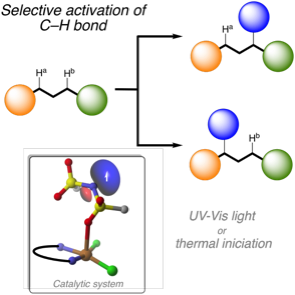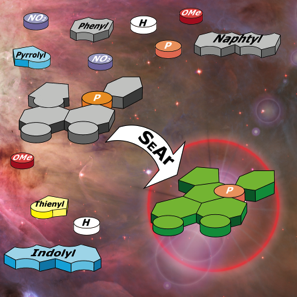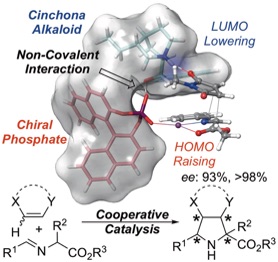A. de Cózar Group

C–H activation is one of the most efficient and economic strategies to introduce functional groups on a carbon skeleton. This reaction is tailor-made in nature by highly selective enzymes. However, the amount of methodologies for selective direct functionalization of C–H is somehow scarce, being an active challenge in synthetic chemistry. Within the known methodologies, some of the most promising results are obtained by using free radicals. Unfortunately, the chemistry of radicals is not completely understood yet.
Collaboration with Prof. Yannick Landais
(Univ. Bordeaux)
Free radical C–H activation

The development of -extended phosphorus heterocycles has been rapidly increasing during the last years due to their particular optoelectronics properties. Our aim is providing fundamental understanding about the reactivity and electronic properties of such compounds, thus providing a guide for the rational design of improved optoelectronic compounds.
Collaboration with Dr. Carlos Romero-Nieto
(Univ. Castilla La Mancha)
Polyaromatic P-derived heterocycles

Analysis of bonding mechanisms
The combined use of Kohn-Sham Density Functional theory (DFT) with fragment analysis oriented methodologies provides crucial information for recognizing the driving forces behind the bonding mechanisms an chemical reactions.
Collaboration with Prof. F. Matthias Bickelhaupt
(Vrije Universitet Amsterdam)
Stereoselective synthesis
The development of stereoselective chemical reactions is of paramount importance in organic synthesis. We aim to know the insights on the driving force that leads to the selective formation of only one of the possible products.
Collaboration with Prof. F. P. Cossío (Euskalherriko Unibertsitatea (UPV/EHU)) and Prof. J. M. Sansano (Univ. de Alicante)
